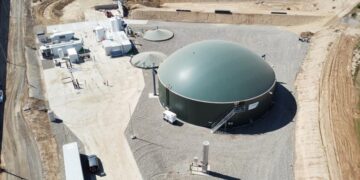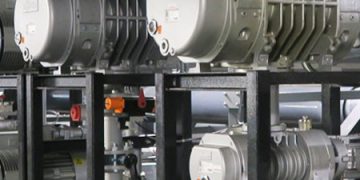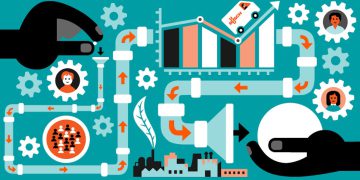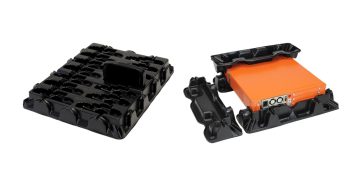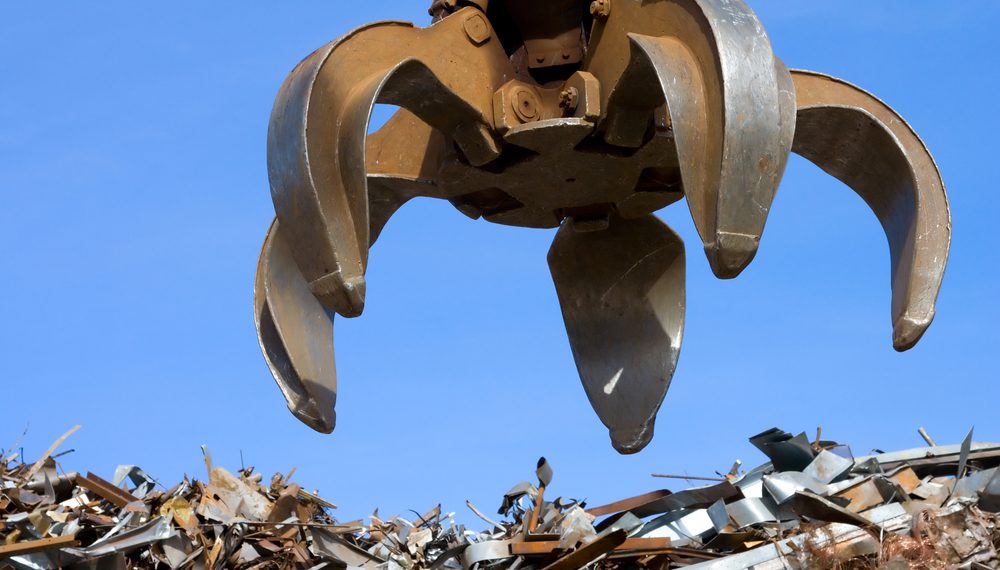The CytroConnect Solutions service offering from Bosch Rexroth helps recycling companies avoid high downtime costs or even contractual penalties. The customized packages of real-time monitoring, data-based analyses, and complementary spare parts management maintain the availability of hydraulic equipment such as scrap shears, shredders, and presses. At the same time, the intelligent combination of cutting-edge IoT technology and hydraulics expertise minimizes maintenance and extends machine life.
The reuse of raw materials is a permanent fixture in the economy. As part of the supply chain, however, it also leads to high deadline pressure and, not least, requires seamless availability of shredders, scrap shears and presses.
If hydraulically driven recycling machines such as shredders, scrap shears or presses fail, there is a threat of contractual penalties. If trucks, trains or ships have to wait for the load, the consequential costs quickly climb into five to six figures. Acute shortages of skilled workers and the simultaneous supervision of distributed sites cause unnecessary delays in maintenance. In addition, recycling companies lose service life, material and budget if they replace hydraulic parts on a fixed cycle as a precaution. Bosch Rexroth counteracts all these economic disadvantages and financial risks with the three service packages CytroConnect Monitor, Maintain and Predict.
Flat rate against failures at a fixed monthly price
Plant operators achieve the highest possible availability and service life of components with CytroConnect Predict. Using predictive analyses and detailed status reports, the experts make maintenance recommendations at such an early stage that the affected components can be replaced in a planned manner. This reduces the user’s previous maintenance effort by up to 50 percent. Complementary services such as complete spare parts management with guaranteed delivery within 24 hours further optimize availability. The service fees usually pay for themselves within a year, but depending on the application, they can also be recouped with a single avoided downtime, as the following real-life example shows:
Through predictive analytics and predictive maintenance of scrap shears, an international company with over 100 distributed yards can avoid high downtime costs. Previous downtime costs per case were around 600 euros, plus penalties of up to 100,000 euros per day if shiploads of steel bales did not leave for overseas on time. Wear on the shear is detected at an early stage on the basis of the pressure peaks and torques on the electric motors, so that the operator can replace the tool in a planned manner in the future. The far-flung maintenance staff is sustainably relieved and now needs less time for troubleshooting, maintenance, planning and spare parts procurement. In addition, monitoring saves electricity costs because the system avoids operation with increased energy consumption.
In another use case, a recycling company avoids unplanned shutdowns and subsequent costs through predictive analysis of waste shredders. The shredded waste has since been delivered on time again as fuel to a cement plant. Previously, frequent failures of hydraulic pumps and electric motors resulted in regular penalties and additional costs for temporary storage of the delivered waste. The maintenance department, which was suffering from a shortage of skilled workers, was relieved of this burden in the long term.
In addition to the all-inclusive CytroConnect Predict service, Bosch Rexroth also offers the basic CytroConnect Monitor package, which provides pure real-time monitoring with access to historical data from the last 24 hours. As an introduction to the topic of rule- and data-based analyses, Bosch Rexroth recommends the CytroConnect Maintain package. The service package monitors the condition of components in the background using predefined rules, warns of damage via push messages, and supports the continuous optimization of applications with regular performance and usage reports.
All three service packages already include the respective required dashboards and sensors. Recycling companies benefit quickly and easily from intelligent and sustainable failure protection.
